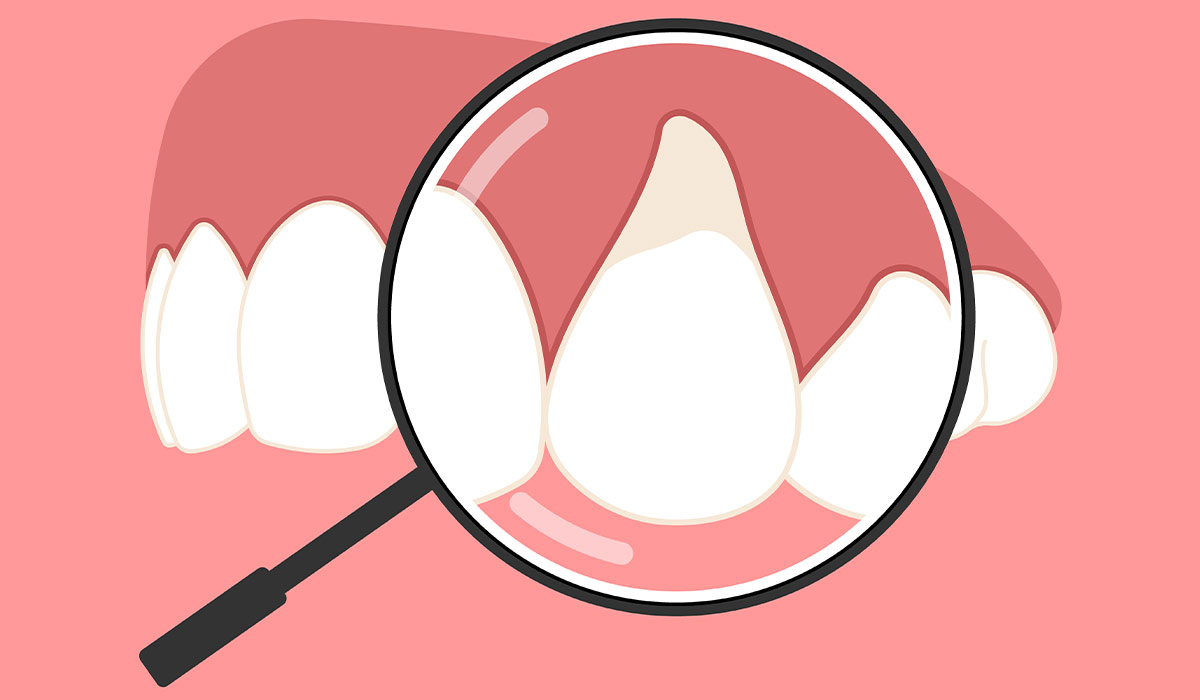Vitiligo is a skin condition that causes loss of pigmentation. This results in the development of lighter or white patches of skin. For some people, it can be a few lighter spots, while others can lose skin color in large areas or even the whole body. If vitiligo affects areas of the body covered by hair, it can turn white or silver. It usually starts with a few lighter spots that can grow or stay the same size. New patches of loss of color can appear anywhere on the body.
This skin condition is classified as common, affecting around 1% of the population. Over half of the affected people will notice the changes before turning 20. It is not possible to predict how much skin will be involved. Some people develop a few lighter-in-color patches; in others, it can be large areas of the body or even all of the skin that turn white.
Vitiligo is not infectious; however, the lack of awareness about this condition may lead to a lack of understanding. Some people feel embarrassed about the changes and develop anxiety or depression. A growing number of social media influencers advocate for people with vitiligo to prevent their isolation.
Skin Color Explained
Skin, hair, and eye color depend on the levels of melanin – pigment produced by melanocytes located in the epidermis. The more pigment is present, the darker the skin colors, hair, or eyes. Everyone has the same number of melanocytes, but some people produce more pigment than others. The amount of melanin our skin makes is hereditary and depends on our genes.
Causes
Vitiligo is an autoimmune condition that causes lighter patches to appear on the skin. In people with autoimmune disorders, the immune system does not work correctly, attacking their own cells instead of viruses or other foreign bodies. The condition occurs when your own immune system attacks melanocytes in your skin. This results in the melanocytes becoming inactive and stopping producing melanin. Lack of pigment in the area leads to the development of lighter patches of skin. People of any skin color can suffer from this condition; however, the contrast between the affected skin and the healthy skin makes it more visible in people of darker skin tones or with tan.
This autoimmune condition is hereditary, which means it has a genetic basis. Some people with vitiligo will have family members with the same condition, although it doesn’t necessarily mean that they will pass it onto their children.
It can be associated with other autoimmune illnesses, like hyperthyroidism or a family history of other autoimmune diseases.
Other possible causes of vitiligo include:
- Stress and traumatic events.
- Repeated trauma like burns, scratches, rubbing or cats. This is known as the Koebner Phenomenon.
- Hormonal changes such as puberty.
- Diseases impacting kidneys or liver.
- Exposure to certain chemicals.

Symptoms
The skin usually feels entirely normal. Patients can sometimes experience an itching sensation before a new patch appears.
Vitiligo appears as irregular patches of discoloration due to the lack of pigment. These patches can be very pale, white or pink. They are often symmetrical, developing on both sides of the body. The patches often start as very pale spots on the body that gradually turn white and can grow. They sometimes can have hyperpigmented (darker) edges. If the areas covered with hair are involved, it can turn white or silver.
The most common sites affected:
- Face.
- Hands.
- Around body openings such as mouth, eyes, nostrils, belly button or genitals).
- Within body folds like underarms or groin.
Types
There are two main types of vitiligo – non-segmental vitiligo and segmental vitiligo. In some cases, both of these types can be present simultaneously. It is also possible that the condition affects the whole body. It is then called universal vitiligo.
Non-Segmental Vitiligo
Non-segmental vitiligo is the most common type of vitiligo. It is also called generalized or bilateral vitiligo. In non-segmental vitiligo, patches often appear as symmetrical depigmentation on both body sides. It tends to spread slowly.
Segmental Vitiligo
Segmental vitiligo, or unilateral or localized, affects only around 10% of people with vitiligo. It is more common in children. In this condition, symptoms only affect one area of the body.
Diagnosis
Your GP or dermatologist will be able to make a diagnosis based on visual examination your medical history, and your family medical history. Sometimes, your healthcare professional will use a Wood lamp to shine ultraviolet (UV) light on your skin. The patches of vitiligo become more visible in this light. This is particularly useful in diagnosing people with lighter skin tones and distinguishing vitiligo from other skin conditions.
Once the diagnosis is confirmed, your healthcare professional will likely advise blood tests to check for other autoimmune diseases.

Treatment
It is not compulsory to treat vitiligo as it is cosmetic and it is not dangerous to the rest of the body. There are a few treatment options if your vitiligo is severe or affects your mental health. These treatments are not a permanent solution as there is no cure. Repigmentation is possible but doesn’t prevent recurrence.
Topical Treatment
Topical corticosteroids or calcineurin inhibitors can be used to restore pigment. Both are anti-inflammatory creams or ointments that can be prescribed in alteration. In long-term use, corticosteroids can cause skin thinning and stretch marks. You would usually need to apply the ointment once daily in amounts described by a fingertip unit. One fingertip unit is the amount of cream or ointment squeezed onto an adult’s finger from the tip to the first crease of the finger. This amount is enough to cover an area twice the size of an adult’s palm.
Calcineurin inhibitors do not cause skin thinning but may be uncomfortable to apply, causing a burning sensation or redness.
Phototherapy
Phototherapy is a widely used second-line treatment for this condition. It is usually prescribed if topical treatments aren’t effective.
This method utilizes UV light to administer controlled doses of radiation. Different types of equipment are available. Whole-body cabins will be used for generalized symptoms, and smaller panels will be used for hand and foot treatments. Treatment usually takes 12 weeks but can be prolonged. It involves clinic visits three times a week throughout the course.
Phototherapy treatment can carry an increased risk of sunburn, cold sores, photoaging, and skin cancers.
Surgery
A surgical procedure called skin grafting can treat the condition in stable cases. This involves removing a patch of healthy skin and transplanting it onto the depigmented area. Like every other surgery, it is associated with the risk of scarring, infection, and failure of the graft. This type of procedure results in two surgical sites per white patch treated – at the donor and recipient sites. It is time-consuming and followed by a long recovery period.
Alternatively, the surgeon may remove melanocytes from the donor patch of skin and transplant them into the affected areas of skin.
Laser Treatment
Laser treatment can be an effective treatment to bring the pigment back. It has been the most successful with vitiligo that has not changed for a long time. It is often combined with other treatment methods.
Removal of Remaining Pigment
Depigmentation is suggested for people who have lost over 50% of their skin pigment. During this treatment, a topical cream is applied to healthy skin to bleach the remaining areas of natural skin tone to match the affected skin. Hydroquinone is the only medicament approved by the Food and Drug Agency (FDA) for depigmentation; therefore, it is the chemical of choice for this treatment. It can cause side effects like itching, redness, and skin stinging. It reduces the production of melanin in epidermal tissue by destroying the melanocytes.
Skin Camouflage
Treating vitiligo is a lengthy and sometimes disappointing process. Patients often opt for using skin camouflage to conceal the patches of depigmentation either as an alternative to the treatment or alongside it. Camouflage improves sufferers’ self-confidence by taking away the focus from the discoloration. Cosmetic camouflage can be permanent or temporary. Permanent camouflage is a form of a cosmetic tattoo. It comes in various shades, enabling the artist to match the right skin color. In this technique, the pigment is directly delivered into the dermal layer of the skin. The tattoo’s color usually fades within 2-5 years and requires maintenance.
Temporary camouflage is obtained using water or oil-based foundations followed by facial powders. The skin should be cleaned before applying cosmetic camouflage. Up to three colors can be mixed to match the patient’s skin tone. The cream is then applied to the skin, starting from the middle of the patch and blending into the healthy skin. The powder is then applied to prevent the foundation from smudging. The camouflage is waterproof, non-greasy, and sunlight-resistant after 1 hour. It can be removed with the use of oily cleansers.
Complications
Uneven skin tone often leads to self-esteem problems, leading to anxiety, social isolation, and depression. This is the case especially when vitiligo appears on exposed body areas. Psychological help with developing coping mechanisms can be very beneficial for people struggling with social aspects of the condition.
Vitiligo can be associated with the risk of eye problems such as inflammation. It affects the color of the irises (the colored part of the eye) but doesn’t cause impaired vision.
People with this condition have to be particularly mindful of sun exposure. Melanin acts as protection against harmful sun radiation. Patches of vitiligo lack melanin, making the skin prone to sunburns. Bad repeated sunburns can aggravate the disorder.
Sun Safety
You can follow these simple rules to ensure sun safety:
- Use SPF 50 sunscreen daily on the exposed areas of the body.
- Seek shade when possible.
- Wear sun-protective clothing.
- Avoid tanning.
Avoiding sunlight may lead to vitamin D deficiency. Vitamin D is known as ‘the sun vitamin’ – it’s produced by our body when exposed to sunlight. If you avoid sun exposure over a prolonged period, you should be mindful of the symptoms below.
Symptoms of vitamin D deficiency:
- Bone pain.
- Muscle weakness.
- Fatigue.
- Hair loss.
- Lack of sleep.
- Low mood.
- Being more susceptible to infections.
You can fight vitamin D deficiency with vitamin D supplements or rich foods.
Sources
- Mary Jo DiLonardo, Melinda Ratini, MS, DO, What is Melanin?, August 22, 2021.
https://www.webmd.com/a-to-z-guides/what-is-melanin - Yale Medicine, Vitilgo, as accessed on September 14, 2023.
https://www.yalemedicine.org/conditions/vitiligo - British Association of Dermatologists, Vilitigo PIL, December 2021.
https://www.bad.org.uk/pils/vitiligo/ - NHS, Vitiligo: Overview, March 22, 2023.
https://www.nhs.uk/conditions/vitiligo/ - Hon A/Prof Amanda Oakley, Dr Ian Coulson, Fingertip Unit, March 2023.
https://dermnetnz.org/topics/fingertip-unit - Dipali G. Rathod, Hira Muneer, Sadia Masood, Phototherapy, February 16, 2023.
https://www.ncbi.nlm.nih.gov/books/NBK563140/ - British Association of Dermatologists, NB-UVB Phototherapy PIL, June 2022.
https://www.bad.org.uk/pils/phototherapy-nb-uvb/ - Vanessa Ngan,Dr Ian Coulson, Gus Mitchell, Hydroquinone, September 2021.
https://dermnetnz.org/topics/hydroquinone - Lizbeth Intong, MD, FACD, Monisha Gupta, MD, FACD, Dr Amanda Oakley, Depigmentation therapy for vitiligo, April 2014.
https://dermnetnz.org/topics/depigmentation-therapy-for-vitiligo - Dr. K. N. Sarveswari, Cosmetic Camouflage In Vitiligo, September 2010.
https://www.ncbi.nlm.nih.gov/pmc/articles/PMC2965902/ - Kathleen M. Zelman, Mary Anne Dunkin, Vitamin D Deficiency, November 15, 2022.
https://www.webmd.com/diet/vitamin-d-deficiency - Paula Ludmann, MS, Kesha Buster MD, FAAD, Sandy Marchese Johnson, MD, FAAD, Bassel Hamdy Mahmoud, MD, PhD, FAAD, Vitiligo: Overview, June 29, 2022.
https://www.aad.org/public/diseases/a-z/vitiligo-overview - Lee Thomas, How I helped people understand vitiligo, As accessed on September 15, 2023.


